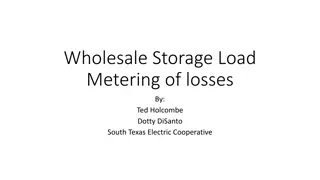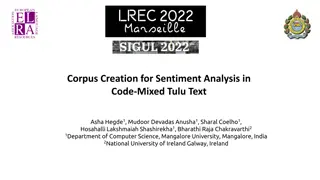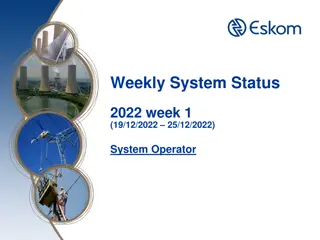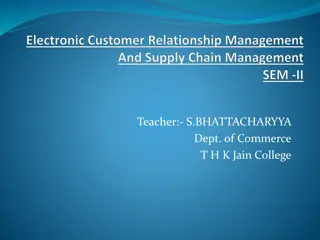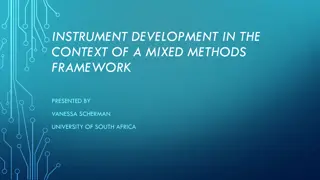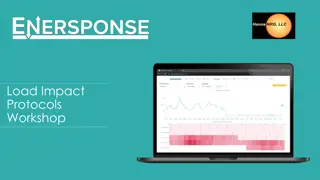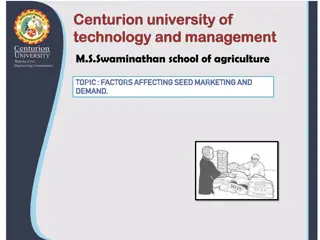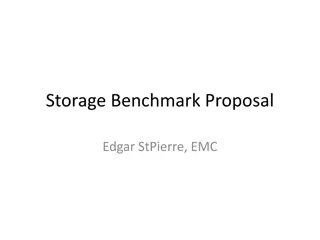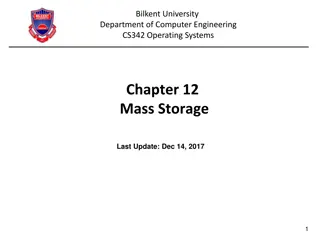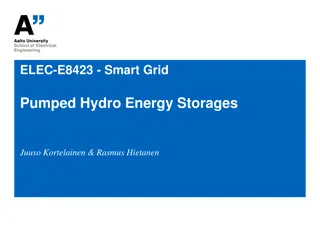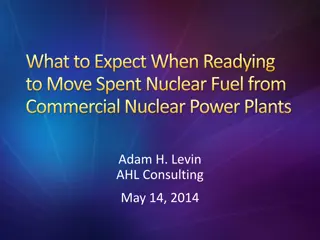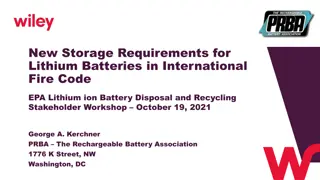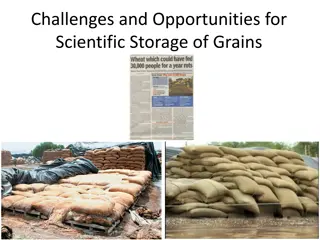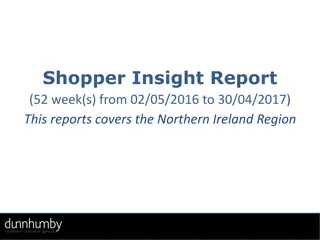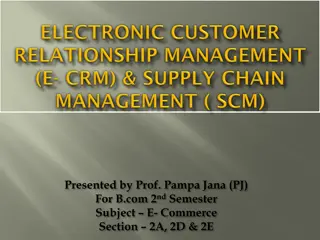Expert Group Report on Mixed Customer Sites with Generation, Demand, and Storage
"The report from the Expert Group on Mixed Customer Sites delves into the structure, meetings, and discussions regarding voltage criteria in relation to machine size, exploring challenges and proposing solutions for mixed site connections. The group emphasizes collaboration, thorough exchanges, and adherence to work plan agreements."
Download Presentation

Please find below an Image/Link to download the presentation.
The content on the website is provided AS IS for your information and personal use only. It may not be sold, licensed, or shared on other websites without obtaining consent from the author. Download presentation by click this link. If you encounter any issues during the download, it is possible that the publisher has removed the file from their server.
E N D
Presentation Transcript
Report from the Expert Group Mixed Customer Sites with generation, demand and storage and definition of system users (EG MCS) Robert Wilson, Chair of EG MCS 12th Grid Connection European Stakeholder Committee Meeting 13 December 2018, Brussels 1
EG MCS structure Chair: ENTSO-E, Robert Wilson Vice-Chair: CEDEC on behalf of the DSO associations, Paul de Wit Internal EG space Public space clarification on arrangements for point of connection to TSO, DSO or CDSO if that will determine the voltage of connection and therefore type Note added by group at 1st meeting but not in version approved by ESC on 14/9/18 2
EG MCS meetings 33 listed members 14 different representative organizations 50 67% participation of members >90% participation of organizations 19 October 2018 kick off meeting 19 November 2018, webinar 17 December 2018, webinar Overall good collaboration among the members, with useful discussions The exchanges reveal the importance of the topic and the complicated aspects that includes Good inputs in accordance with follow up actions Common space (SharePoint) and emails are used to provide inputs Workplan continues as agreed with no changes foreseen at the moment 3
Discussion to date RfG type voltage criteria RfG was intended to apply in relation to machine size: Extract from RfG Whereas recitals: (9) The significance of power generating modules should be based on their size and their effect on the overall system. Synchronous machines should be classed on the machine size and include all the components of a generating facility that normally run indivisibly The default voltage criteria (connection at >110kV = automatic type D regardless of size) was according to ENTSO-E introduced to encourage connection at appropriate voltages for the size of the machine, and acknowledging that connection at a higher voltage will impact the transmission system more directly so a lack of machine performance will be more likely to lead to socialisation of increased operational costs Generally economics dictates that larger machines connect at higher voltages hence the voltage criteria is for straightforward connections - usually academic However: In mixed site connections (eg a PV installation in association with a larger generator or small CHP within a large industrial complex) this can lead to a disproportionate level of requirement on small plant where this becomes classed as type D due to the voltage at the site connection point Some geographical issues are not accounted for where a lower voltage connection is simply not possible or economic (eg hydro in remote mountainous locations) Agreed to present possible solutions to ESC and seek guidance 4
Possible Solutions The Mixed Customer Sites EG has considered this issue and discussed a number of options: Define an interface point within a larger complex and use this rather than the overall connection point to set and establish all RfG requirements including the voltage that determines the RfG type of the generator Use the interface point only in determining the voltage for use in establishing the RfG type of the generator (ie RfG requirements still generally apply at the connection point) Change the voltage level of the default criteria to 220kV which then captures only transmission connections Remove the type D voltage criteria completely Points to consider: Should private and public networks be treated differently? If type thresholds are relaxed by revising the voltage criteria, would further operational costs need to be socialised? How will an interface point be defined? What visibility will the TSO/DSO have of performance within a connection site? Could compliance be established? What technical issues could arise from determining requirements at an interface point? Will the solution work in all cases? 5
Interface Point technical considerations Fault Ride Through FRT requirements apply to type B power generating modules for faults on the transmission system, and to type D power generating modules for secured faults on the system (although in practice these conditions will usually be identical) The minimum voltage profile for a fault that needs to be ridden through is defined by the TSO within certain parameter ranges and is done separately for type B and D A reclassified generator (previously type D now type B or C typically) would now only need to ride through faults as per the type B requirement The most important parameter for FRT is the impedance of the network between the fault and the generator. Specifying the FRT requirements for transmission faults at the connection point to the system, which is also the nearest point to the transmission network, allows this to be monitored more easily Reactive Range RfG art 17.2 for type B synchronous power generating modules sets out that the relevant system operator may specify reactive power requirements RfG art 18.2 (a) & (b) for type C synchronous power generating modules adds more detail to the reactive power capability expected at maximum capacity to be specified by the relevant system operator in coordination with the relevant TSO within the boundaries of a P-Q voltage envelope; and adds a requirement to compensate for any high voltage line or cable between the generator and its connection point, although this may be through compensation within the network so netting off between the generator and the gain of any cable Applying all RfG requirements at the interface point (and using this to establish compliance) would in some cases remove the requirement in type C to compensate up to the actual connection point but would resolve issues caused by a small generator being assessed for reactive requirements as part of a larger complex Only using the interface point to determine the type would instead retain unchanged the requirement to compensate up to the actual connection point, however without a pragmatic interpretation it would also retain the difficulties for a small generator within a larger industrial complex as the generator could not supply reactive power up to a power factor requirement set by the larger active load 6
Possible Solutions preliminary assessment Voltage Criteria Solution Pro Con Use interface point for all Treats public/private networks identically Solves issues with supply of reactive power across connection point Visibility of performance within a network to TSO/DSO Possible legal issues in establishing an additional boundary Doesn t solve geographic availability of LV issue Use interface point for type selection only Maintains visibility of performance to TSO/DSO By generally leading to reclassification, reduces technical requirements for smaller generators Possible legal issues in establishing an additional boundary Doesn t solve geographic availability of LV issue Similar in outcome to removing the voltage criteria Change the default criteria to 220kV Simple minimum change to RfG Doesn t resolve issues with transmission connections constrained for geographic reasons Doesn t solve case where a major industrial site is connected at 220kV+. Some examples of this in Germany. Remove type D voltage criteria completely Simple in principle Resolves all cases Simple but may be viewed as significant change to RfG. Potentially lose incentive for selection of lower voltage connection for smaller generators Possible socialisation of additional operational costs although this is difficult to quantify 7
Workplan and Next Steps 2018/2019 40 41 42 43 44 45 46 47 48 49 50 51 52 01 02 03 04 05 06 07 08 09 10 11 12 13 14 15 16 17 18 19 20 Meetings/ webinars MCS MCS MCS&ESC PMO (ENTSO-E) Ongoing PMO support Capture of ideas for key sections First draft of report sections Collation of report Comments and detailed drafting Final report delivery The next meetings of the group are as follows: 17 Dec 14:00-16:00 webinar to follow discussion at ESC, further progress actions, set responsibilities for preparation of material Further webinars are planned for Jan & Feb. These will aim to: Jan review of material, establishing a framework for the final report Feb put material together in draft It is planned to hold a joint physical meeting between the three expert groups established at the same time (ie with Storage and Pumped Storage Hydro EGs), probably in Feb/March Likely to be 1-2 webinars following this to finalise the report 8



